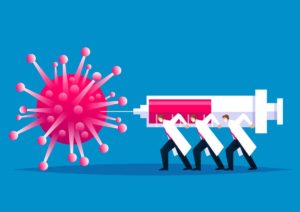Relevance: prelims/ mains: G.S paper 3: science and technology

Context
A team of experts has looked at available research and published their assessment that there is strong, consistent evidence that the primary transmission route of SARS-CoV-2 is indeed airborne.
Why in news?
Since last year, several studies have found that the coronavirus SARS-CoV-2 spreads mainly through the air. Yet there have also been other studies, including a recent one funded by the World Health Organization, that have found the evidence inconclusive.
Now, a team of experts has looked at available research and published their assessment in The Lancet: that there is strong, consistent evidence that the primary transmission route of SARS-CoV-2 is indeed airborne.
What are the implications of the assessment?
If transmission is airborne, public health measures would need to take that into account. Measures that focus solely on large-droplet-borne transmission, but fail to treat the virus as predominantly airborne, would leave people unprotected.
How did the experts reach this conclusion?
Reviewing existing research, the six experts from the UK, US and Canada identified 10 streams of evidence that collectively support the hypothesis that SARS-CoV-2 primarily transmits through the airborne route.
- Super-spreading events account for substantial SARS-CoV-2 transmission. Indeed, the authors wrote, such events may be the pandemic’s primary drivers. Detailed analyses of human behaviours and other variables in concerts, cruise ships etc have shown patterns “consistent with airborne spread of SARS-CoV-2 that cannot be adequately explained by droplets or fomites”, they wrote.
- Long-range transmission of SARS-CoV-2 between people in adjacent rooms has been documented in quarantine hotels, but never in each other’s presence.
- Asymptomatic or pre-symptomatic transmission from people who are not coughing or sneezing is likely to account for at least a third, and perhaps up to 59%, of all transmission globally and is a key way SARS-CoV-2 has spread around the world, indicating a predominantly airborne mode of transmission.
- Transmission of SARS-CoV-2 is higher indoors than outdoors and is substantially reduced by indoor ventilation. Both observations support a predominantly airborne route of transmission, the authors wrote.
- New infections have been documented in healthcare organisations where there have been strict contact-and-droplet precautions and use of PPE designed to protect against droplet but not aerosol exposure.
- Viable SARS-CoV-2 has been detected in the air. In laboratory experiments, SARS-CoV-2 stayed infectious in the air for up to 3 hours. In one study, viable SARS-CoV-2 was identified in air samples from rooms occupied by Covid-19 patients in the absence of aerosol-generating procedures; in another study, it was detected in air samples from an infected person’s car.
- SARS-CoV-2 has been identified in air filters and building ducts in hospitals with Covid-19 patients; such locations could be reached only by aerosols.
- Studies involving infected caged animals that were connected to separately caged uninfected animals via an air duct have shown transmission of SARS-CoV-2 that can be adequately explained only by aerosols.1
- No study “to our knowledge”, the authors wrote, has provided strong or consistent evidence to refute the hypothesis of airborne SARS-CoV-2 transmission. Some people have avoided SARS-CoV-2 infection when they have shared air with infected people, but this situation could be explained by a combination of factors, including variation in the amount of viral shedding between infectious individuals and different environmental conditions.
- There is limited evidence to support other dominant routes of transmission—ie, respiratory droplet or fomite.

